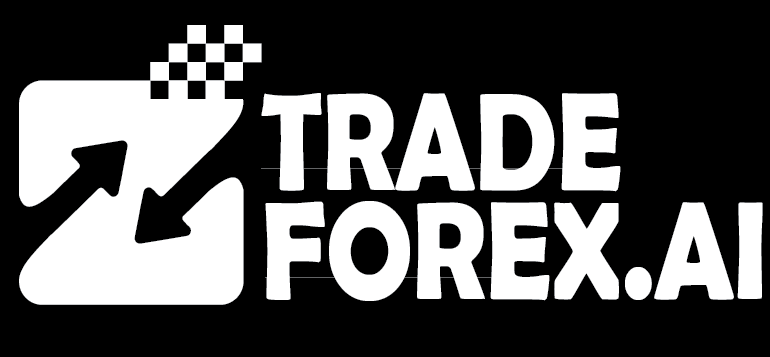AI Forex Trading 2025 is redefining how currency markets operate. Artificial intelligence is no longer a futuristic experiment — it has become a core part of trading strategies worldwide. In 2025, AI systems are not only analysing charts faster than humans but also learning from market behaviour to improve their own decision-making. This evolution is changing how traders open, manage, and close positions.
Traders who understand the tools behind AI trading strategies for Forex are gaining a competitive advantage. AI in Forex market analysis can now process economic reports, social sentiment, and technical signals in milliseconds. When combined with machine learning in currency trading and automated Forex trading systems, the results are more precise, consistent, and often less emotional than human-driven trading.
In this new era, it is not enough to simply install an AI bot and hope for profits. Success depends on knowing how these systems work, which data they rely on, and how to integrate them into an overall trading plan. Inexperienced traders can misuse automation and end up with bigger losses than if they traded manually. That is why education and testing remain as important as technology itself.
How AI is Changing the Forex Landscape
Just a few years ago, most traders relied heavily on manual chart reading, news monitoring, and gut feeling. While these methods still have value, they are slow compared to AI-powered tools. AI Forex Trading 2025 is built around speed, accuracy, and adaptability. Advanced algorithms now track multiple markets at once, spot patterns that humans often miss, and execute trades without hesitation.
The biggest change is adaptability. AI trading strategies for Forex no longer rely on fixed settings that work only in certain conditions. They adjust in real time. If the market suddenly shifts due to breaking news, AI can change position sizes, adjust stop losses, or even reverse trades instantly.
Machine learning in currency trading is central to this. Unlike older rule-based systems, machine learning models continuously analyse new data. They learn from both wins and losses, refining their decision-making process over time. This means that an AI system trading EUR/USD today could trade it more effectively next month because it has learnt from recent market conditions.
Real-world example: During a sudden interest rate announcement from the Federal Reserve, human traders may hesitate due to uncertainty. A well-trained AI system will already have parameters for such events, executing trades within milliseconds while factoring in historical market responses.
The Core Benefits of AI in Forex Market Analysis
AI in Forex market analysis has brought a level of efficiency that manual analysis cannot match. Instead of looking at one or two charts, AI can analyse dozens of currency pairs across multiple timeframes simultaneously. It considers technical indicators, economic events, and even market sentiment from social media.
The benefits include:
- Speed: AI processes data in milliseconds, enabling earlier entries.
- Accuracy: It identifies trends and reversals with high precision.
- Consistency: It removes emotional decision-making, sticking to rules.
- 24/7 Monitoring: AI works in global markets around the clock.
- Scalability: One AI system can run multiple strategies across several pairs.
Automated Forex trading systems amplify these advantages by acting instantly on AI signals. For example, during volatile London or New York market openings, AI-powered systems can catch early momentum trades that humans might miss.
Even better, AI can integrate multiple forms of analysis. It can combine a moving average crossover with sentiment analysis from financial news and a volatility filter from recent market data. This multi-layered approach gives traders a stronger edge compared to using single-indicator strategies.
Machine Learning in Currency Trading for Smarter Decisions
Machine learning in currency trading has become the backbone of AI’s adaptability. These systems are not programmed with rigid rules — instead, they are trained to learn from the market. The more data they process, the smarter they become.
For instance, a machine learning system might notice that GBP/USD tends to overreact to Bank of England rate announcements but corrects itself within 30 minutes. Over time, the system will identify this pattern, adjust its trade timing, and potentially increase position size during similar events in the future.
In AI Forex Trading 2025, machine learning is often paired with real-time feeds of macroeconomic data, liquidity reports, and interbank order flow. This ensures that predictions are based on the most current information available, reducing the risk of outdated signals.
These systems can also detect subtle market changes. For example, they might recognise when a strong trend is losing momentum before most traders notice. This early detection allows for faster exits, preserving profits and reducing drawdowns.
Practical AI Trading Strategies for Forex in 2025
AI trading strategies for Forex in 2025 have evolved into highly specialised approaches tailored to different trader profiles. Some of the most effective include:
- Trend Following AI Models – Identify and ride strong trends until reversal signs appear. Best for swing traders.
- Mean Reversion AI Systems – Spot overbought and oversold zones for countertrend trades. Popular in range-bound markets.
- News Event AI Bots – React instantly to high-impact releases such as NFP or interest rate announcements.
- Multi-Strategy AI Portfolios – Combine different methods to balance risk and return.
- Volatility-Based Models – Adjust trade size and timing based on real-time volatility measurements.
Each of these strategies uses AI in Forex market analysis to improve decision-making. For example, a trend-following AI might not just rely on moving averages. It could also factor in economic trends, sentiment analysis, and liquidity conditions. Automated Forex trading systems then ensure perfect execution at the exact moment a trade signal is generated.
Automated Forex Trading Systems in Action
Automated Forex trading systems have reached unprecedented efficiency in 2025. They operate continuously, executing trades in milliseconds with no emotional hesitation. These systems do more than open and close positions — they manage trades dynamically from start to finish.
They can:
- Move stop-loss orders to lock in profits as trends progress
- Adjust position sizes based on market volatility
- Run multiple strategies across different pairs without conflict
- Monitor correlations between pairs to optimise exposure
For instance, if machine learning in currency trading shows that EUR/USD and USD/CHF are inversely correlated, the system can hedge trades accordingly. This minimises risk while preserving upside potential.
Another real-world example is when a sudden geopolitical event causes market panic. An automated system with AI can instantly reduce exposure, switch to safe-haven currencies like JPY or CHF, and avoid heavy losses.
Risk Management with AI Forex Trading 2025
Risk management remains the foundation of profitable trading. AI Forex Trading 2025 improves this by using predictive models to manage exposure before risk levels become dangerous.
Machine learning in currency trading helps predict when volatility spikes are likely. If historical patterns show increased volatility after certain economic releases, AI can reduce position sizes or widen stop-loss levels preemptively.
Automated Forex trading systems also provide emergency safeguards. For example, if total drawdown reaches a set percentage, all trades can be closed instantly to protect capital. These features allow traders to operate with confidence, knowing that both human planning and AI safeguards are in place.
The Importance of Data in AI Forex Trading
AI in Forex market analysis relies on high-quality data. Without clean and reliable information, even the best AI will fail. Data sources include:
- Historical price data for pattern recognition
- Economic calendars and news feeds
- Real-time liquidity and order book information
- Sentiment analysis from financial media and social platforms
Machine learning in currency trading works best when data is comprehensive. For example, combining interest rate data with historical volatility levels can help AI predict likely price reactions to central bank decisions.
Traders who feed low-quality or incomplete data to AI risk making poor decisions. Inaccurate signals from faulty data can lead to losses, even with advanced systems.
Human-AI Collaboration for Better Results
While AI can operate independently, human oversight is still critical. Traders set the overall strategy, define acceptable risk, and make adjustments during unexpected events. AI handles execution, speed, and consistency.
For instance, during extreme market conditions caused by geopolitical conflicts, a trader may decide to pause AI trading temporarily. This prevents exposure to unpredictable swings that even AI might misinterpret.
The best approach is synergy — letting AI handle high-speed data processing and execution while humans focus on strategic planning, long-term goals, and adapting to macroeconomic shifts.
Challenges and Risks of AI Forex Trading
AI Forex Trading 2025 offers huge benefits but comes with challenges:
- Overfitting in machine learning models can make them less adaptable.
- Over-reliance on automation can lead to trader skill decline.
- Some market events may still be unpredictable for AI.
- Poorly coded automated Forex trading systems can cause rapid account losses.
The solution is to combine AI in Forex market analysis with regular human monitoring. Traders should backtest strategies, update models frequently, and avoid leaving systems unsupervised for long periods.
The Future Outlook for AI in Forex
The future of AI in Forex market analysis is highly promising. Advancements in machine learning in currency trading will make AI systems more predictive and personalised. The integration of blockchain for secure transactions and 5G technology for faster execution will further enhance AI trading potential.
Automated Forex trading systems will likely become more customisable, allowing traders to design unique strategies tailored to specific pairs or market conditions. Traders who embrace these changes early will have a significant edge over those who stick to outdated methods.
Final Tips for Traders in 2025
To succeed with AI Forex Trading 2025:
- Select platforms with proven AI performance records
- Backtest every strategy before live trading
- Learn how AI makes its decisions
- Combine automation with solid trading principles
- Avoid relying solely on AI for all decisions.
By blending AI trading strategies for Forex, advanced AI in Forex market analysis, machine learning in currency trading, and automated Forex trading systems, traders can position themselves for success in the fast-changing Forex market.
Read More : AI for Scalping in Forex: Smart Tools Every Trader Can Trust

I’m Chaitali Sethi — a seasoned financial writer and strategist specializing in Forex trading, market behavior, and trader psychology. With a deep understanding of global markets and economic trends, I simplify complex financial concepts into clear, actionable insights that empower traders at every level. Whether it’s dissecting winning strategies, breaking down market sentiment, or helping traders build the right mindset, my content bridges the gap between information and implementation.




